who shot whom?
zeph’s pop culture quiz #14
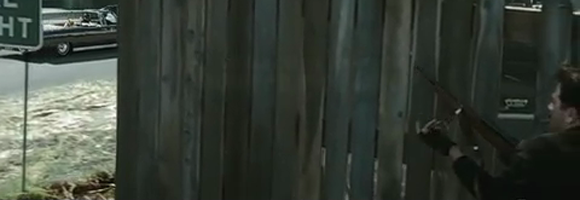
Who shot whom in the scene depicted above? If you recognize the movie from which the screenshot was taken, and if you have watched that movie carefully, you’ll have no problems in answering the question ;-)
Just leave a comment with your educated guess—you can ask for additional hints, too. [Leaving a comment is easy; just click the ‘Leave a comment’ at the end of the post and fill in the form. If it’s the first time you post a comment, it will be held for moderation. But I am constantly checking, and once I’ve approved a comment, your next ones won’t be held, but published immediately by the system.]
angelo dundee
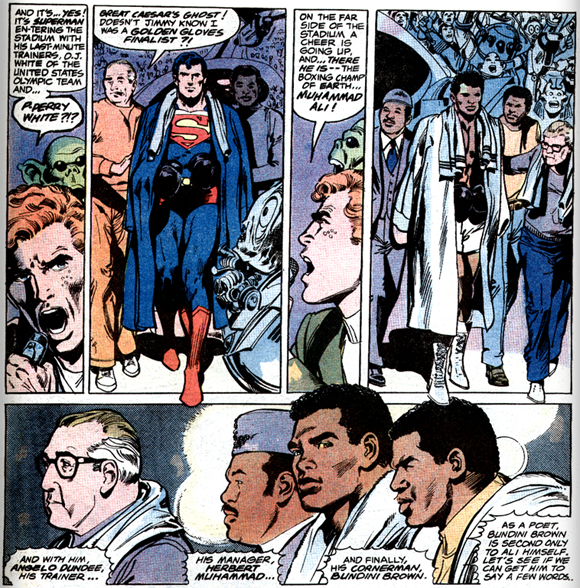
Last Wednesday, 01 February 2012, ↑Angelo Dundee died age 90. He was the famous trainer of world’s greatest, ↑Muhammad Ali, who just recently ↵turned 70.
When I heard the news of Dundee’s passing away, immediately pictures from a comic book filled my mind. As a kid I for the first time heard of Dundee via the album ‘Superman vs. Muhammad Ali’ (O’Neill & Adams 1978). The above is a part of page 32.
cyberpunk short films
Under the menu ↵cyberpunk—↵motion pictures I added the page ↵short films. Very much work in progress as the whole collection, but with direct links. More entries will follow as soon as possible. Above that I added and corrected quite something in all the other cyberpunkish artefacts listings. Nothing is perfect yet, though.
churchill on cyberpunk
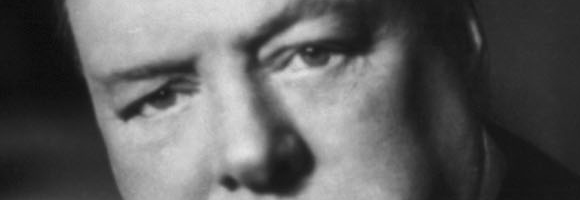
Paul Kent Alkon, professor emeritus of English and American literature, author of ‘Origins of futuristic fiction’ (1987), and ‘Science fiction before 1900’ (1994), in 1997 has published a ↓wonderful article on ↑Winston Churchill‘s relation to the writing and thought of ↑H. G. Wells, science fiction and dystopia in general. More recently Alkon covered the issue even more in-depth in his chapter ‘Imagining science: Churchill and science fiction’ (2006: 155-176). What struck Bruce Sterling the most is Churchill’s premonition of drone warfare:
Have we reached the end? Has Science turned its last page on them? May there not be methods of using explosive energy incomparably more intense than anything heretofore discovered? Might not a bomb no bigger than an orange be found to possess a secret power to destroy a whole block of buildings—nay to concentrate the force of a thousand tons of cordite and blast a township at a stroke? Could not explosives even of the existing type be guided automatically in flying machines by wireless or other rays, without a human pilot, in ceaseless procession on a hostile city, arsenal, camp, or dockyard? (8-9). (Churchill 1929: 221-222 cited in Alkon 1997: 19)
brains ain’t computers
When, ↵like recently, I am talking about the historical significance of cybernetics for contemporary culture and society I more often than not mention that in the process of marking itself off from mechanistic visions (Ashby 1957 [1956]: 1-6), cybernetics quite early emphasized a whole array of concepts: networks, complexity, self-organisation, reproduction, adaptation, cognition, aiming at and maintaining goal-states, purposeful behaviour (or action?), and autonomy. This line-up implicitly leads towards a vision of cybernetic systems as independent actors, maybe even gifted with ‘free will’. Therefore it is not astounding that a hypothetical analogy emerged early on: ‘mind to body’ is like ‘information to machine’. (Joslyn & Heylighen 1999, Heylighen & Joslyn 2001)
Additionally I mention that computer technology early on was chosen as the perfect metaphor for cybernetic system.
More or less by chance I today rediscovered ↑Chris Chatham‘s ↑10 Important Differences Between Brains and Computers, which do serve as a fine reality check.
the lovecraft tie
Above these apparent hieroglyphics was a figure of evident pictorial intent, though its impressionistic execution forbade a very clear idea of its nature. It seemed to be a sort of monster, or symbol representing a monster, of a form which only a diseased fancy could conceive. If I say that my somewhat extravagant imagination yielded simultaneous pictures of an octopus, a dragon, and a human caricature, I shall not be unfaithful to the spirit of the thing. A pulpy, tentacled head surmounted a grotesque and scaly body with rudimentary wings; but it was the general outline of the whole which made it most shockingly frightful. Behind the figure was a vague suggestions of a Cyclopean architectural background.
The writing accompanying this oddity was, aside from a stack of press cuttings, in Professor Angell’s most recent hand; and made no pretense to literary style. What seemed to be the main document was headed “CTHULHU CULT” in characters painstakingly printed to avoid the erroneous reading of a word so unheard-of. This manuscript was divided into two sections, the first of which was headed “1925 – Dream and Dream Work of H.A. Wilcox, 7 Thomas St., Providence, R. I.”, and the second, “Narrative of Inspector John R. Legrasse, 121 Bienville St., New Orleans, La., at 1908 A. A. S. Mtg. – Notes on Same, & Prof. Webb’s Acct.” The other manuscript papers were brief notes, some of them accounts of the queer dreams of different persons, some of them citations from theosophical books and magazines (notably W. Scott-Elliot’s Atlantis and the Lost Lemuria), and the rest comments on long-surviving secret societies and hidden cults, with references to passages in such mythological and anthropological source-books as Frazer’s Golden Bough and Miss Murray’s Witch-Cult in Western Europe. The cuttings largely alluded to outré mental illness and outbreaks of group folly or mania in the spring of 1925. (Lovecraft 1928 [1926])
So, here is the tie between Cthulhu, the sunken city of R’lyeh and anthropology … but that wasn’t my drift, instead:

See also ↵lovecraftian tintin.
the illustration at the top of the post is by ↑Michael Komarck (2006)
compromise
what is decided?
zeph’s pop culture quiz #13
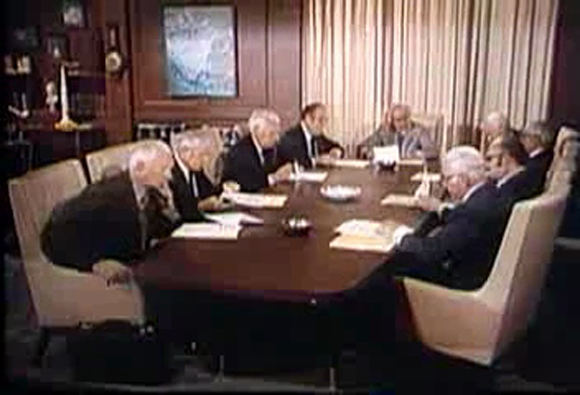
What are these gentlemen deciding?
Just leave a comment with your educated guess—you can ask for additional hints, too. [Leaving a comment is easy; just click the ‘Leave a comment’ at the end of the post and fill in the form. If it’s the first time you post a comment, it will be held for moderation. But I am constantly checking, and once I’ve approved a comment, your next ones won’t be held, but published immediately by the system.]
UPDATE 1 (02 February 2012):

It seems to be a really tough one this week. I do admit that the movie in question is little known today, but I deem it to be a seminal one. Here are some more hints:
I could also have asked: ‘What is transmitted?’ and shown the new screenshot above. The information received by the apparatus shown is a direct consequence of the decisions the gentlemen at the conference table in the first screenshot make. But no, they do not decide to build some machine or system, as guessed in the comments. Although in the past they have decided to drive a specific technology forward. What they are deciding now potentially are matters of life and death.
UPDATE 2 (03 February 2012):
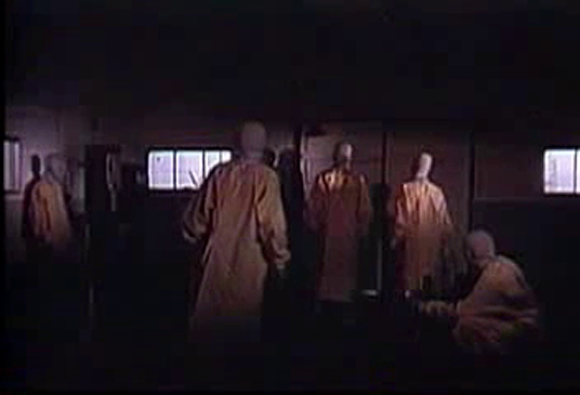
If you can guess who or what these people are, than you know what kind of technology the gentlemen at the conference table in the first screenshot had driven forward. From this it only is a small step to the solution.
UPDATE 3 (04 February 2012):
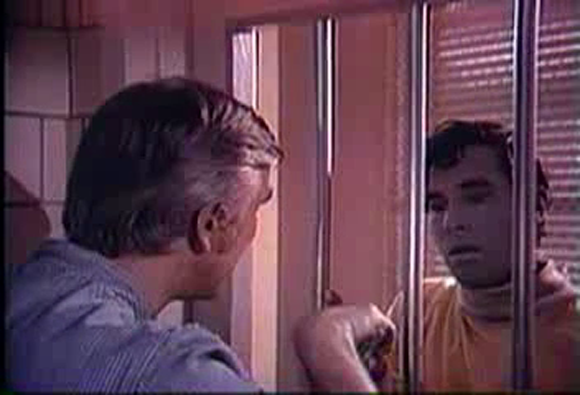
Here’s another screenshot which definitely should lead you towards the technology in question. And maybe you even pick up the other strong hint in this picture.
UPDATE 4 and solution (04 February 2012):
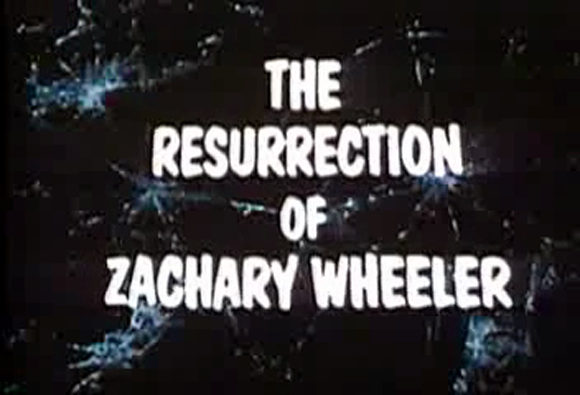
The screenshot in update 3 finally led ↑kueperpunk to ↵the solution. He recognized Leslie Nielsen and so found the movie: ‘The Resurrection of Zachary Wheeler’ (Wynn 1971).
In order to answer the question what the gentlemen in the first screenshot are deciding, I have to tell a bit of the story (some spoilers ahead):
Investigative TV journalist Harry Walsh (Leslie Nielsen), driving in a car together with his cameraman, comes to the scene of a car accident. He immediately recognizes the nearly fatally wounded victim in the crashed car—presidential candidate Senator Clayton Zachary Wheeler (Bradford Dillman). An ambulance brings Wheeler into the next hospital. Walsh follows, but then Wheeler mysteriously vanishes from the hospital and the official news stories say that he has gone on holiday, fishing somewhere remote. Walsh senses a big-time cover-up and conspiracy, tries to track Wheeler and to find out the truth. Now for the spoilers.
Years ago a secret committee (first screenshot above), comprising high-ranking politicians and industry leaders, has sponsored a research project in genetic technology. Dr. Redding (James Daly) and his assistant Dr. Layle Johnson (Angie Dickinson) have perfected the technique of cloning human beings. Inside a secret facility, everything financed by the committee, located somewhere in New Mexico’s desert, they grow ‘somas,’ blank human clones (third screenshot above), who nearly have no cognitive functions at all.
When Zachary Wheeler suffers the nearly fatal accident, his genetic profile is transmitted to the secret facility (second screenshot above). The information is injected into one of the blank clones, who then developes into a double of Wheeler. (In the screenshot above Walsh has discovered a second Wheeler-clone and first thinks it is Wheeler himself.)
The clone double then serves as a repository of organs, as spare parts. That way it was possible to resurrect Zachary Wheeler. The clone was slaughtered and all the necessary parts transplanted.
The whole process of course is very costly. Hence the committee maintains a list of people whom they will help with Dr. Redding’s technology. In the first screenshot the committee has a session and decides whom to put on the list and whom not. Of course only people who can help the political and economical goals of the committee will make it to the list.
Sounds familiar? Well, the core idea—clones as spare parts reservoirs for the rich and powerful—we also have in ‘↑The Island‘ (Bay 2005). And indeed, there was a copyright infringement suit against ‘The Island’ … by the makers of ‘↑Parts: The Clonus Horror‘ (Fiveson 1979). It eventually ↑was set out of court. A year before ‘Clonus’ there was ‘↑Coma‘ (Crichton 1978) based on the ↑novel of the same name by Robin Cook (1977). It has the organ-repository theme, but without cloning. ‘The Resurrection of Zachary Wheeler’ predates all this by far, plus it also has that political thriller angle. In my opinion it’s a great injustice that the movie is hardly known today.
With the presidential elections in the USA under way this year I recommend to you cyberpunk afiçionados: ‘↑The Manchurian Candidate‘ (Frankenheimer 1962), ‘The Resurrection of Zachary Wheeler,‘ and the great novel ‘↑Interface‘ (Stephenson & Jewsbury 1994).
guy in parliament

In Ireland they’ve got a saying which roughly goes like this: ‘Guy Fawkes was the only man ever who had honest intentions when he set foot into parliament.’ Well, members of the ↑Palikot’s Movement protested in a session of the Polish parliament against Poland signing ↑ACTA (a kind of international version of ↑SOPA and ↑PIPA) by holding paper Guy-Fawkes masks in front of their faces :o) See also ↵occupy guy, ↵moore on fawkes, and ↵guy headroom.



